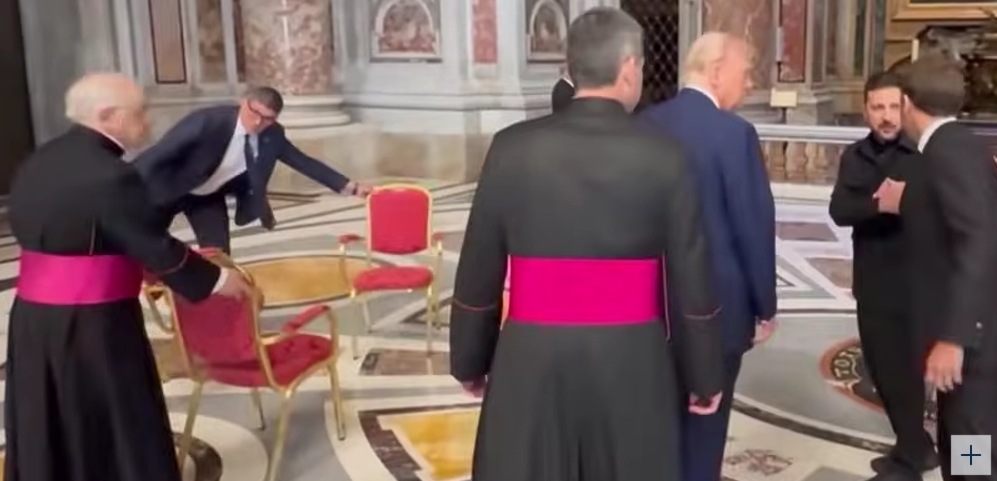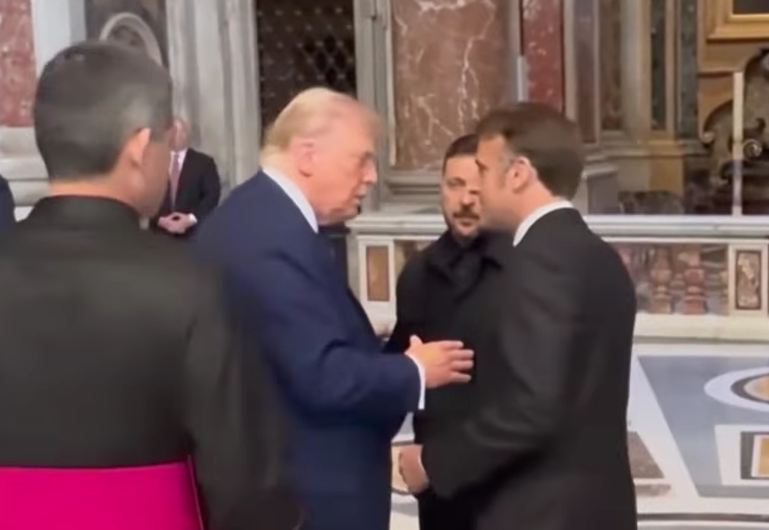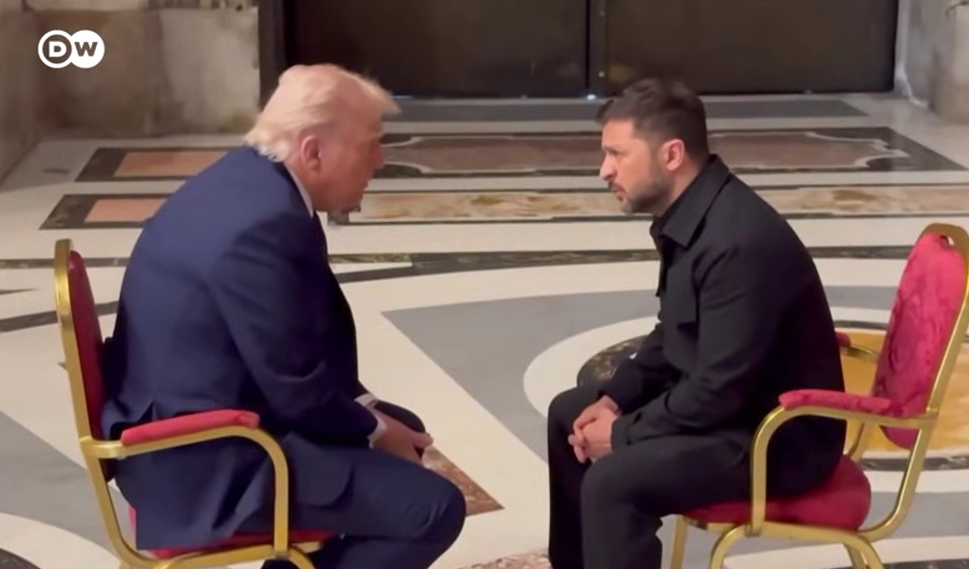How have Trump-Putin-Zelensky tensions shaped the latest Ukraine peace efforts?
The world watched as U.S. President Donald Trump met Ukrainian President Volodymyr Zelensky in Rome on April 26, 2025.
Their brief but intense discussion at the Vatican, during Pope Francis’ funeral, sparked new questions about Russia’s role in the Ukraine war.
What did Trump say afterward that surprised many? He openly criticized Russian President Vladimir Putin, hinting that Putin might not want peace.
This article explores Trump’s comments, the meeting’s context, and what it means for the ongoing conflict.
Trump-Putin-Zelensky Tensions Threaten Ukraine’s Future
A Surprising Critique of Putin

After the Rome meeting, Trump posted on Truth Social, expressing frustration with Putin’s recent attacks on Ukrainian civilian areas.
“There was no reason for Putin to be shooting missiles into civilian areas, cities, and towns over the last few days,” he wrote.
He suggested that Putin might be “tapping me along” and not serious about ending the war. Trump even raised the idea of new sanctions, like banking or secondary sanctions, to pressure Russia.
This was a rare moment, as Trump has often avoided directly criticizing Putin, instead focusing his frustration on Zelensky.
The timing of Trump’s words was striking. Just a day earlier, he had claimed Russia and Ukraine were “very close to a deal.”
His shift in tone came after a deadly Russian attack on Kyiv, which killed at least eight people. The attack seemed to change Trump’s view, making him question Putin’s commitment to peace talks.
The Trump-Zelensky Meeting: A Step Toward Peace?

The Rome meeting was the first face-to-face talk between Trump and Zelensky since a tense White House clash in February 2025.
That earlier meeting ended with Trump accusing Zelensky of being ungrateful for U.S. aid, leading to a brief pause in military support.
In Rome, the mood was different. Photos showed the two leaders in deep discussion inside St. Peter’s Basilica.
elensky called it a “good meeting” and said they discussed a “full and unconditional ceasefire” to protect Ukrainian lives.
The meeting lasted about 15 minutes, and both sides described it as productive. They agreed to keep talking, with U.S. and Ukrainian teams planning further discussions.
Zelensky also met with other leaders, like French President Emmanuel Macron and British Prime Minister Keir Starmer, who reaffirmed support for Ukraine.
However, Trump’s focus quickly turned to Putin’s actions, suggesting the Russian leader might be the bigger obstacle to peace.
What’s Next for the Ukraine-Russia Conflict?

How have Trump-Putin-Zelensky tensions influenced U.S. foreign policy decisions?
Trump’s comments signal a possible shift in U.S. strategy. He has pushed hard for a quick ceasefire, even threatening to walk away from talks if no progress is made soon.
His envoy, Steve Witkoff, met with Putin in Moscow the day before the Rome meeting, with the Kremlin claiming Putin was open to talks “without preconditions.”
Yet, Putin’s continued attacks on Ukraine cast doubt on his intentions.
Zelensky remains firm, rejecting ideas like giving up Crimea or accepting Russian control over occupied areas. He insists on strong security guarantees for Ukraine.
Meanwhile, Trump’s mention of sanctions shows he might be ready to take a tougher stance on Russia, though he has not yet followed through on earlier threats.
The war, now in its fourth year, continues to claim lives, with over 43,000 Ukrainian soldiers reported dead by December 2024.
Trump’s criticism of Putin could reshape peace efforts, but questions remain. Will he stick to this tougher approach?
Can Zelensky and Putin find common ground? The world waits for answers as the conflict drags on.
